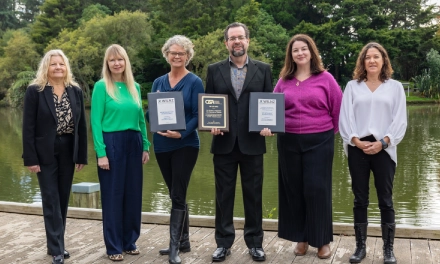Children in Aotearoa New Zealand are being targeted by significant amounts of junk food and drink advertising. A new study shows that children who live and go to school in less well-off neighbourhoods have far greater exposure to advertising, than their peers in more affluent neighbourhoods.
The work is the most comprehensive analysis of children’s exposure to outdoor advertising to date. Alongside new data, this study combined prior data sets collated by Principal Investigator Dr Victoria Egli, Associate Professor in the School of Health at the University of Waikato.

Associate Professor, School of Health, Dr Victoria Egli
Her team calculated a simple and novel score for advertising exposure, using the proportion of unhealthy advertising relative to the number of total advertisements. This exposure score was then the correlated with indicators of neighbourhood deprivation.
The study shows a statistically significant relationship between the amount of unhealthy food and drink advertising around the school and the socio-economic deprivation of the area.
Dr Egli said, “As adults, it’s our job to look after children and we know exposure to unhealthy food and drink advertising normalises unhealthy dietary patterns and is likely exacerbating existing health disparities.”
Children are especially attractive to advertisers. They are current and future customers; they influence household purchases; younger children have limited capacity to discern advertising from entertainment; and they spend much of their time within their school zones.
The World Health Organisation recognises children’s exposure to unhealthy food marketing and the use of persuasive techniques as a breach of children’s rights.

Outdoor advertising identified by researchers from Google Street View
Co-author Dr Kelly Garton from the University of Auckland said, “Our data shows a clear need for policy change. We’d like to see policy makers implement and enforce mandatory regulations to ban unhealthy food and drink marketing around schools.”
“When we think about the kind of school food zones we want our kids in, I think we can all agree we want safe environments, ones that promote health and wellbeing. Kids are so much more than current and future consumers for big food companies,” said Dr Egli.
Current New Zealand regulations on unhealthy food and drink advertising are voluntary and self-regulated by the companies themselves. This study adds to the existing evidence that self-regulation is not working.
Dr Egli is upbeat around solutions:
“It doesn’t need to be this way. New Zealand can lead the world in restricting junk food marketing to kids, with stronger, mandatory government regulations to ensure kids are not surrounded by unhealthy marketing in their school food zones.”
She concludes, “If we remove this environmental pollution from school food zones, opportunities will arise to enrich these spaces instead. And schools, kids and communities can decide this for themselves, let’s not let school food zones be controlled by big food and drink corporations.”



